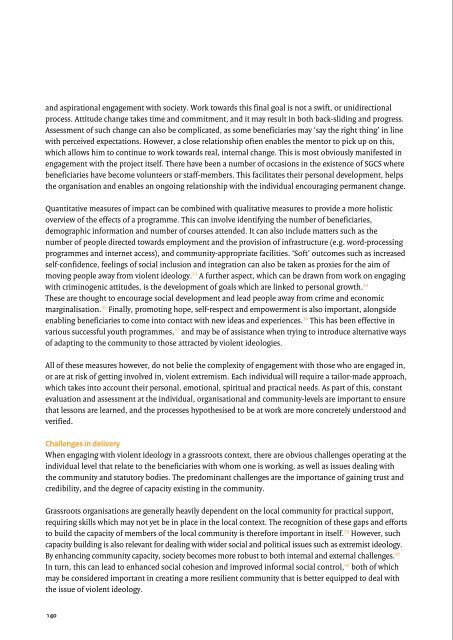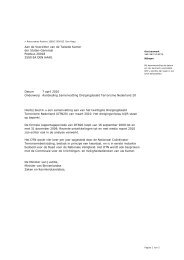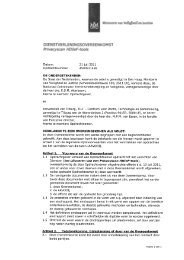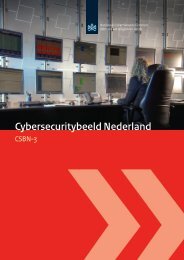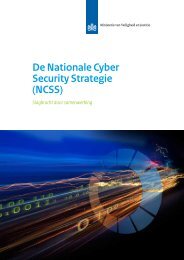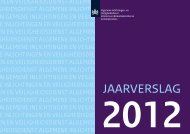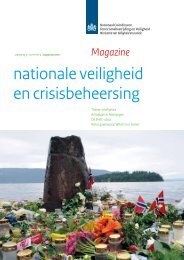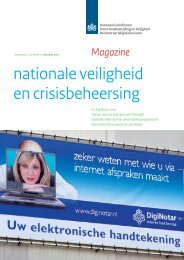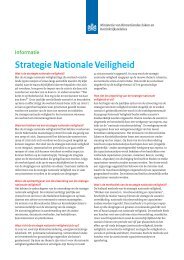Countering Violent Extremist Narratives
Countering Violent Extremist Narratives
Countering Violent Extremist Narratives
- No tags were found...
Create successful ePaper yourself
Turn your PDF publications into a flip-book with our unique Google optimized e-Paper software.
and aspirational engagement with society. Work towards this final goal is not a swift, or unidirectionalprocess. Attitude change takes time and commitment, and it may result in both back-sliding and progress.Assessment of such change can also be complicated, as some beneficiaries may ‘say the right thing’ in linewith perceived expectations. However, a close relationship often enables the mentor to pick up on this,which allows him to continue to work towards real, internal change. This is most obviously manifested inengagement with the project itself. There have been a number of occasions in the existence of SGCS wherebeneficiaries have become volunteers or staff-members. This facilitates their personal development, helpsthe organisation and enables an ongoing relationship with the individual encouraging permanent change.Quantitative measures of impact can be combined with qualitative measures to provide a more holisticoverview of the effects of a programme. This can involve identifying the number of beneficiaries,demographic information and number of courses attended. It can also include matters such as thenumber of people directed towards employment and the provision of infrastructure (e.g. word-processingprogrammes and internet access), and community-appropriate facilities. ‘Soft’ outcomes such as increasedself-confidence, feelings of social inclusion and integration can also be taken as proxies for the aim ofmoving people away from violent ideology. 33 A further aspect, which can be drawn from work on engagingwith criminogenic attitudes, is the development of goals which are linked to personal growth. 34These are thought to encourage social development and lead people away from crime and economicmarginalisation. 35 Finally, promoting hope, self-respect and empowerment is also important, alongsideenabling beneficiaries to come into contact with new ideas and experiences. 36 This has been effective invarious successful youth programmes, 37 and may be of assistance when trying to introduce alternative waysof adapting to the community to those attracted by violent ideologies.All of these measures however, do not belie the complexity of engagement with those who are engaged in,or are at risk of getting involved in, violent extremism. Each individual will require a tailor-made approach,which takes into account their personal, emotional, spiritual and practical needs. As part of this, constantevaluation and assessment at the individual, organisational and community-levels are important to ensurethat lessons are learned, and the processes hypothesised to be at work are more concretely understood andverified.Challenges in deliveryWhen engaging with violent ideology in a grassroots context, there are obvious challenges operating at theindividual level that relate to the beneficiaries with whom one is working, as well as issues dealing withthe community and statutory bodies. The predominant challenges are the importance of gaining trust andcredibility, and the degree of capacity existing in the community.As discussed, when engaging with individuals who advocate or have sympathy for violent extremism, thereis a huge hurdle of gaining trust to overcome, and a consequent need for a long-term commitment torelationship building. The grassroots, Muslim-led approach has a number of advantages in this regard, asthere is usually already a degree of shared cultural and religious understanding between the organisationand the beneficiaries. 41 If a grassroots organisation employs effective advocates, its central position in thecommunity will facilitate a multi-level engagement strategy, in which all parties are encouraged to takeownership of the problem. This interaction between groups and the related knowledge-sharing shouldaim to improve relations and increase understanding. This acts to build trust, and can also act as a site ofadvocacy for marginal groups. 42 Lastly, there remains the issue of those who are resistant to an alternativeapproach and who resist any form of counter-narrative. These are among the most challenging beneficiaries,and require ongoing, long-term work to try and address their maladaptive attitudes. As discussed, anindividual-level, dynamic process of assessment and intervention is needed to identify which elementsof a multi-dimensional approach, such as the one proposed here, should be emphasised. It is this personcentricapproach that has the greatest chance of success.Conclusions and implications for future workThrough this discussion, we hope to have illustrated the value and necessity of grassroots, Muslim-ledcommunity organisations as a site for engaging with issues of social exclusion and violent Islamistextremism. Their understanding of the community in which they are situated offers vital insight into theappropriate and effective delivery of counter-narratives and execution of programmes. Partnership workis central to this, and needs to include the local community, religious leaders and statutory bodies thattogether aim to promote a sense of ownership and shared responsibility. Leadership from within the civiland religious communities is a vital part of such a strategy, conferring credibility, trust and a true, nonviolentinterpretation of Islam.A key feature to the success of delivering narratives to counter extremism is the holistic and pervasivenature of the message. The counter-narrative needs to be delivered both explicitly, where maladaptivebeliefs are robustly challenged, and implicitly, through the ethos of the organisation and its approachtowards social, political and religious issues. Education and social programmes are ideal vehicles throughwhich these can be communicated. The combination of ‘hard’ and ‘soft’ outcomes that result from successfulengagement through these routes is important in maintaining an attractive offer to potential beneficiaries.It also provides an open forum for discussion and interaction on issues such as socio-economic disadvantage,foreign policy and social exclusion, allowing a personal relationship to be built between organisers,mentors and beneficiaries. This should be underpinned with an authentic interpretation of Islamicdoctrine, and is key to influencing those at risk of participating or currently involved in violent extremism.Grassroots organisations are generally heavily dependent on the local community for practical support,requiring skills which may not yet be in place in the local context. The recognition of these gaps and effortsto build the capacity of members of the local community is therefore important in itself. 38 However, suchcapacity building is also relevant for dealing with wider social and political issues such as extremist ideology.By enhancing community capacity, society becomes more robust to both internal and external challenges. 39In turn, this can lead to enhanced social cohesion and improved informal social control, 40 both of whichmay be considered important in creating a more resilient community that is better equipped to deal withthe issue of violent ideology.1 S. Bux, ‘Muslim Youths, Islam and <strong>Violent</strong> Radicalisation:Addressing Some Myths’, The Police Journal, vol. 80, no. 3, 2007,pp. 267-278.2 This includes evaluation work funded by London Probation andthe AGIS 2006 Reducing Hate Crime in Europe 2 Project.3 D.W. McMillan and D.M Chavis, ‘Sense of Community: ADefinition and Theory’, Journal of Community Psychology, vol. 14,no. 1, 1986, pp. 6-23.4 See for example F. Tonkiss & A. Passey, ‘Trust, Confidenceand Voluntary Organisations: Between Values and Institutions’,Sociology, vol. 33, no. 2, 1999, pp. 257-274; P. Hirst, ‘Can secondaryassociations enhance democratic governance?’ in J. Cohen& J. Rogers (eds.), Associations and democracy, Verso, New York,1995, pp. 101-13.140 141


